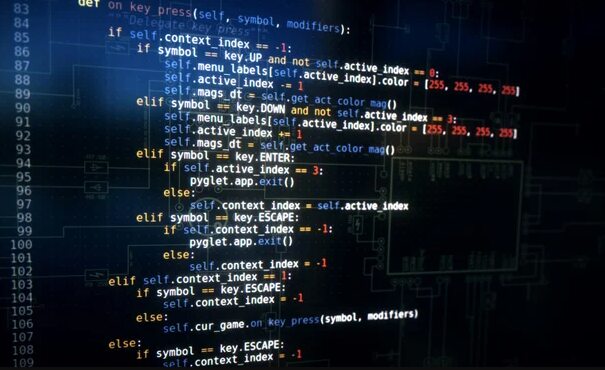Technology has become a real driving force for practically every other aspect of our life in today’s world. A new buzzword is “did some computer programming nyt” in order to indicate just one direction that the knowledge of programming can take modern journalism, technology, and problem-solving. In this blog, we look at what “did some computer programming nyt” means, why that is relevant in the context of the New York Times, and how programming in general today is more valuable than it has been in the digital era.
Table of Contents
ToggleThe Relationship Between Journalism and Programming
With the rise of digital media, there is a higher need for those professionals who know both journalism and technology. The New York Times, among other publications recognized worldwide, has for quite some time now embraced programming to build better stories, in-line them, and correctly convey data. Identifying and analyzing data is one of the key skills that will gain more prominence in online journalism.
In particular, programming skills are crucial for tasks like:
- Data Analysis: A journalist has to go through a lot of information. Programming can really facilitate that by sorting, analyzing it, and then presenting data in a meaningful way. In fact, NYT reporters use code to analyze public records, election results, or social media trends.
- Interactive storytelling: From HTML and CSS to JavaScript, even Python, is used to make things interactive-from detailed visualizations to calculators and quizzes that enhance the readers’ experience.
- Performing repetitive tasks repeatedly: Journalists often handle very large data sets or have to perform routine tasks that include fact-checking. Writing small programs to automate parts of the job saves time and effort; it also guarantees accuracy, key in maintaining credibility.
- Writing your own tools: In many cases, there’s collaboration between developers and journalists at the NYT on bespoke in-house tools that speed up the process of analyzing the data. These range from internal content management systems to real-time trend-tracking tools.
You may also like Latest Computer Reservation System News and Trends.

Why Programming Matters for Modern Storytelling
Programming is not a technical skill but a creative tool for doing journalism. When NYT writers “do some computer programming, they often further their capabilities to tell complex stories by reducing and refining data.”.
Consider the example of the interactive COVID-19 maps created by major news organizations like the NYT. This work is made possible through a mix of programming and journalistic skills. Readers can click to show data from their location, filter in various ways, or show changes over time. Obviously, an article like this would not be possible without any programming.
Data Journalism on The Rise
Data journalism has become an important trend where news outlets use data analyses to break stories or go deeper in their insights. In this connection, the concept “did some computer programming nyt” can be related directly to this rise in telling stories that are driven by data. The ability to collect, analyze, and present data has now become an essential skill for journalists in giving more than surface reporting.
Following are some of the important benefits related to data journalism:
- Precision: Data-driven stories are underpinned by solid facts. Programming empowers the journalist to mine secure data from governmental sources, non-profits, or scientific studies.
- Interactive content: It enables readers to participate in and engage themselves with stories in ways unimaginable, finding information more appealing and relatable.
- Transparency: Data journalism often involves an expectation of transparency. You could share data and methods with the readers. Then they may verify or play with your findings.
The Evolution of Programming at The New York Times
The NYT has always been on the bleeding edge of technological innovation in journalism. The publication, over recent years, has placed a far greater emphasis on programming to make improvements in the presentation and consumption of news.
In fact, NYT’s digital news teams have developed visualizations for large data. The code usually is driven by JavaScript frameworks and backend processing in languages like Python or Ruby. Such works put life into stories, making what always stands to be a wall of numbers into engaging, easy-to-understand graphs.
The exclusive knowledge of programming is not limited to interactive media; it does more in enhancing SEO, optimizing website performance, and developing new storytelling formats. It’s that kind of adaptability that has helped the NYT hold a position among the best news outlets in the world.
Programming Skills for Digital Journalism
The NYT uses a greater range of programming skills than one might expect. For example, depending on the project, an NYT reporter/developer may use:
- JavaScript and front-end libraries: JavaScript is the key that makes your web page interactive with the viewer, such as updating data in real time or creating infographics.
- Python: It is used more in the data analysis perspectives. Large data sets and rapid prototyping of data-driven applications are the points of interest where this language finds its utilization in the domain of computerized learning.
- SQL: SQL is the language with which one works with databases. Once one gets into data analysis or storing information about readers, SQL enables fast and effective querying of data.
- HTML/CSS: These are base web technologies; they are used to structure and style articles so that they can be read on a range of devices and screen sizes.
- R and data visualization tools: R is a programming language for statistical analysis. It is usually used together with visualization tools to come up with nice charts and graphs.
How “Did Some Computer Programming NYT” Reflects Broader Industry Trends
The phrase “Did Some Computer Programming NYT” reflects a larger trend in media and journalism. Publications all over the world are implementing more technology in their storytelling, and programming plays a major role in that transformation. The landscape has changed rather a lot in the last decade-this with the decline of print media and the rise of digital platforms.
Today, it is rare to find an original piece of news without the involvement of a team of full-time developers and data specialists working with reporters. Actually, at NYT, collaboration between journalists and programmers has always been encouraged.
Coding for Journalists: A Necessary Skill?
Not every journalist needs to be a good programmer, but basic knowledge can make a lot of difference. Even the least knowledge in this field of programming languages can be useful for a journalist in order to:
- Find data-driven stories: It is amazingly powerful to know how to code against databases to find that story that has so far lain buried.
- Working with developers: Understanding the basics of programming aids in communicating effectively between journalists and developers, hence allowing them to work more efficiently.
- Compete in the market: The media keeps on changing very fast. Those with technological skills most of the time have an edge over their rivals. Because an increasing number of news outlets are shifting news publication online, the demand for journalists who can write in programming languages is huge.
Real World Examples: Programming and Journalism
A number of high-profile projects show the ways in which programming has changed journalism at The New York Times:
- Outcome: This section of the NYT features data-driven stories and analysis. Often, these types of articles would also include smaller, interactive charts, diagrams, and sometimes even tools that might help a reader through more complex subjects, like economic trends or election results.
- Election tracking tools: The major Election NYT programming teams put together live data trackers displaying results in real time, voters, and analysis. In this way, it keeps readers aware of what is taking place in an appealing manner.
- COVID-19 reporting: In covering the pandemic, New York Times journalists worked with developers to create deeply detailed, interactive maps, charts, and analytical tools with which readers could follow the spread of a virus.

The Future of Journalism in a Digital World
As technology continues to evolve, so does a journalist’s need for more and more programming. However, atTimes of New York, this has allowed them to stay ahead of digital storytelling. This trend goes far beyond the NYT, though, as the industry increasingly relies on programmers.
The future may have even more ways of gathering, analyzing, and presenting news. Perhaps AI and machine learning could enable journalists to sift through huge masses of data even quicker, while virtual and augmented reality opens up completely new, immersive methods for experiencing news stories.
For now, “Did Some Computer Programming NYT” is a representation that the future of journalism stands at an edge, between the tangle of traditional reporting and modern technology. As more journalists and news organizations continue to adopt programming, storytelling will only evolve to create an ever-enriched experience for readers.
Conclusion
“Did Some Computer Programming NYT” highlights the importance of programming in modern journalism. At The New York Times, knowledge of coding is a plus not only among the technical team but also among reporters. With the knowledge of programming, journalists are able to make better analyses, create more interactive stories, and develop tools to engage readers. Currently, the change represents a general movement in journalism toward data-driven reporting, of which programming is an indispensable skill in the future.
As the digital age progresses, individuals who “do some computer programming” in newsrooms such as the NYT will continue to shape the way information is presented and consumed. Whether through interactive maps, live election results or data-driven stories, programming has become integral to modern journalism.





